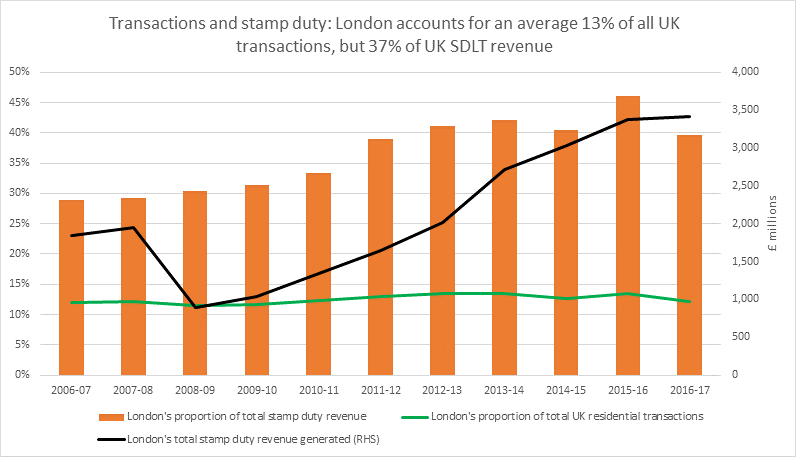- Date of Article
- Nov 02 2017
- Written by
- Leslie Schroeder
- Sector
- Residential services
Keep informed
Sign up to our newsletter to receive further information and news tailored to you.
Previously, this blog has looked at the dramatic decline in transactional activity in the residential market since the 3% additional stamp duty surcharge was introduced in April 2016. London’s transaction levels alone are down between 30-40% over the long-term average and so many, including this company, would like to see the government change, decrease, or eliminate the surcharge altogether. The current housing market situation can be described as nothing short of moribund and with the surcharge and Brexit-related uncertainty effecting activity and prices, what better time than the upcoming Autumn Budget to announce a modification of stamp duty to help light a fire back into the market?
So what are the chances?
Well, stamp duty revenue was recently been released, the first full year where the additional 3% surcharge has been fully incorporated into the data. And despite the fact that transaction levels across the country are down, the additional revenue seems to have garnered the government a hefty sum:-
- 19% of all residential transactions across England, Wales and NI fell into the ‘additional property’ bracket, equating to 211,310 transactions and £1.7bn from the additional 3% stamp duty revenue element alone.
- In London, the highest proportion of additional home purchases occurred in Kensington and Chelsea (36%) and Westminster (33%), followed by the City of London (30%). Together, these three ‘boroughs’ saw 2,470 additional properties (second homes) purchased during the 2016/17 year. These properties earned the government £126 million in stamp duty, on the 3% element alone.
- Looking at Greater London, the city saw almost 30,000 additional property transactions over the 2016/17 year, bringing the government £525 million in revenue from the 3% additional stamp duty alone. This means that the revenue earned from the additional property market in London equates to 31% of all of the 3% additional stamp duty revenues across England, Wales and NI.
- All this, despite the fact that average monthly sales volumes in London are down around 25% since the additional 3% tax was introduced.
London is clearly a powerhouse of activity for investment landlord’s and second-home owners. This, together with house prices in London being well above the average in most of the rest of the country, means that the city is also a powerhouse of income generation for the government. Even looking at stamp duty revenue as a whole, London still accounts for 37% of all UK revenue generation, while only accounting for 13% of all UK residential transactions.
If there was any question whether the government would suspend the new additional stamp duty surcharge, it is the figures above that would suggest this is probably unlikely to happen anytime soon. The more likely situation would be a stamp duty ‘holiday’ for either first time buyers or purchase prices below a certain threshold, or both. But based on past experience (2010-2012), the latter is unlikely to have much of an effect on the London market anyway, and it is precisely this region which has seen the slowest activity and lowest house price growth over the last 12 months.
November 2017
Leslie Schroeder
Sources: Land Registry, HMRC, Carter Jonas Research
Source: Table 3a HMRC Annual Stamp Tax Statistics


